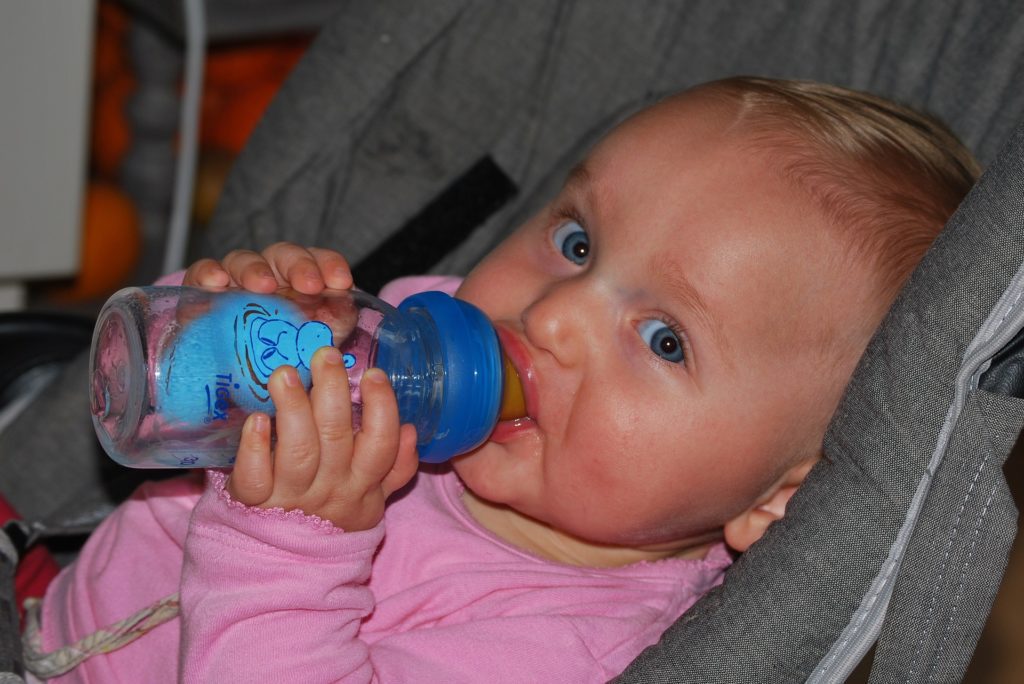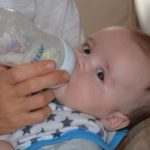One question that may seem a little less important, but is still definitely worth asking is: “how many baby bottles do I need?” because when you’re a first-time mom there are so many things to worry about. Preparing for the arrival of a new baby can be an exciting and overwhelming time for many parents. There are a lot of baby items out there, so, naturally, you have a lot of questions.
Whether you plan to feed your infant breast milk or formula, you may wonder how many baby bottles you’ll be needing. In this blog post, we will give you a guide on how many bottles you will need as a new mom, and some tips on how to use them!
How Many Baby Bottles Do I Need In A Day?
You don’t need to follow any hard and fast rules when it comes to stocking up on baby bottles. Your baby’s age and appetite, if you’re nursing, and whether you need to make extra for daycare are just a few of the variables that could affect this figure. Here’s a helpful guide as a rough estimate for your baby’s needs:
Two To Four Baby Bottles
During the first few months, a mother will use two to four baby bottles every day. Babies at this age generally wake up several times throughout the night for a feeding. Therefore, mothers need to stock up on bottles to guarantee their infants get enough to drink.
While it is possible to pump and preserve breast milk in bottles, many mothers find it more convenient to feed their babies straight from the breast. Unfortunately, this means they’ll need to carry about not one, but two bottles at all times: one for extracted milk, and one for water or formula.
Extra bottles should be stored nearby in case of leaks or accidents. Having two to four bottles on hand every day will help a mother meet her baby’s demands whenever they arise.

Three To Six Baby Bottles
A mom will need at least three to six baby bottles per day when her baby is between the ages of newborn to three months. This is because, on average, a newborn will drink about eight to 12 ounces of milk per feeding, and will eat about eight to 10 times per day. However, keep in mind that every baby is different, and some may eat more or less often than others.
A mom will know her baby is ready to start drinking from a bottle when he starts showing interest in what she is eating or drinking, reaches for her cup, or tries to grab the bottle herself. If you are breastfeeding, you may want to wait until your baby is at least six months old before introducing a bottle, as it can be confusing for some babies to switch back and forth between breast and bottle.
Six Or More Baby Bottles
For the working mother who needs to be away from her child for several hours daily, it may be prudent to stock up on bottles. Have enough bottles for the full-time your child will be at daycare or with a nanny at home so that they won’t have to be reused.
A bottle of breast milk every two hours may be necessary if your baby is a frequent milk consumer. Depending on the policies of the daycare where you plan to leave your child, you will likely need to make milk in at least 5 – 10 bottles.
It’s normal to have to buy more bottles as your child gets older. It reduces, though, when kids become accustomed to drinking milk from a cup or glass.
Which Baby Bottles Are Best, And Why?
With so many different brands, materials, and sizes on the market, it can be hard to know where to start. Here are some factors to consider when selecting baby bottles for your little one:
1. Material
Baby bottles can be made from glass, plastic, or silicone. Glass is the most durable option, but it can break if dropped. Plastic is lightweight and shatter-resistant, but some parents worry about chemicals leaching into the milk. Silicone is BPA-free and non-toxic, but it can retain odors over time.
2. Size
Baby bottles come in a variety of sizes, from small 2-ounce bottles to large 12-ounce bottles. You’ll want to choose a size based on your baby’s appetite and how often you’ll need to refill the bottle.
There are a variety of bottle sizes to choose from, including the ones listed below.
- 4-ounce
- 5-ounce
- 8-ounce
- 9-ounce
The amount of milk consumed at each feeding varies depending on the baby’s age. It’s recommended to select the bottle’s capacity based on the infant’s individual needs. However, many parents choose to purchase the larger sizes, even though they will only be partially filled with milk in the beginning. It’s true that in the first year of life, newborns develop rapidly. It won’t be long before a 4-ounce bottle is insufficient, in which case you’ll have to go out and get more.
3. Nipple shape
Nipples come in two basic shapes: traditional (round) or orthodontic (flat). Some parents find that orthodontic nipples are easier for babies to latch onto, but others prefer the traditional shape. Ultimately, it’s up to you and your baby to decide what works best.

4. Flow rate
Baby bottles typically have three flow rates: slow, medium, and fast. The flow rate will be determined by the size of the hole in the nipple. A slower flow rate is best for newborns, while a faster flow rate is better for older babies who are drinking more milk at each feeding.
5. Extras
Some baby bottles come with extras like bottle brush cleaners and carrying cases. These features can be handy, but they’re not essential. You can always purchase these items separately if you need them.
Final Thoughts
It is always difficult to estimate how many baby bottles you will need. It varies from baby to baby, and even from day to day. Some babies take more bottles than others, and some days they may want more or less than usual.
We hope that this guide has provided you with all the information you need to know about how many baby bottles you will need. We understand that every family is different and that there is no one-size-fits-all answer to this question. However, we hope that this guide has given you a good starting point and that you will be able to make an informed decision about what is best for your family.











